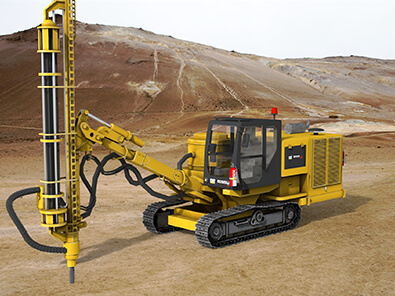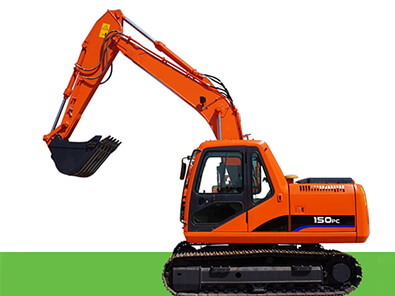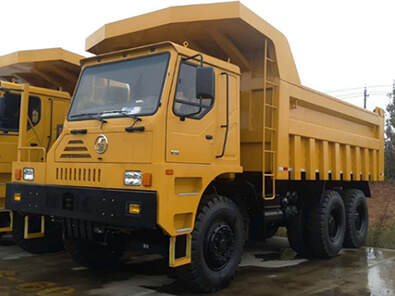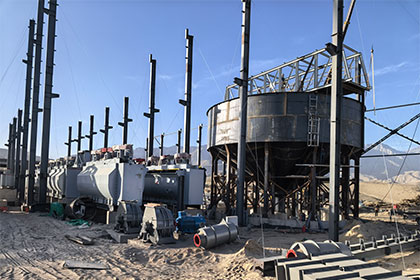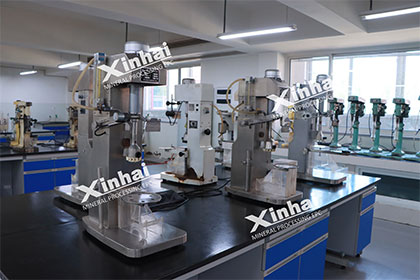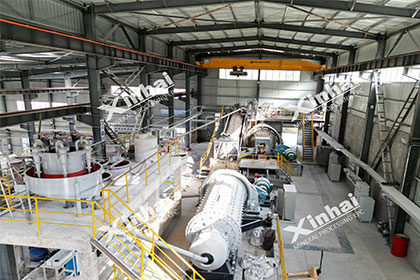2025 Cobalt Mining Investment Guide
 Shirley
Shirley
 Jun 29, 2022
Jun 29, 2022
 2303
2303
If you want to know more details about equipment, solutions, etc, please click the button below for free consultation, or leave your requirements!
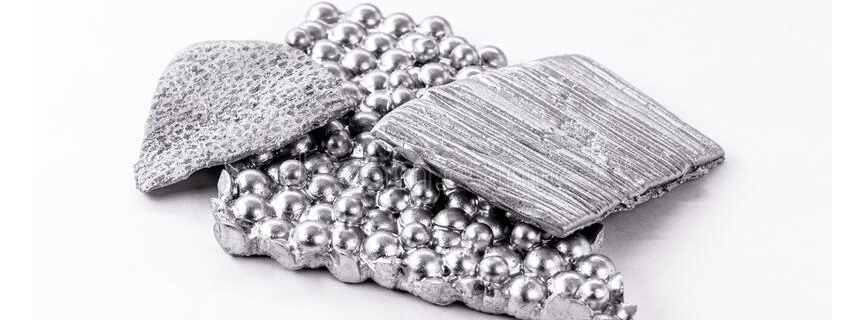
Cobalt is a silver-white ferromagnetic metal with a silver-white surface with a slightly pale pink surface. It is relatively hard and brittle, and has ferromagnetic properties. The magnetism disappears when heated to 1150°C. It does not work with water at room temperature and is stable in humid air. Cobalt is an important raw material for the production of heat-resistant alloys, cemented carbide, anticorrosive alloys, magnetic alloys and various cobalt salts.
01 Cobalt Mineral Classification
BackThe mineralogy of cobalt deposits is diverse and includes both primary (secondary) and secondary (supergene) facies. In primary deposits, most cobalt is recovered from sulfide minerals such as Carolyite (Cu(Co,Ni)2S4), pyrite ((Fe,Ni,Co)9S8), magnesite(Co3S4), and magnesite ((Co,Ni)3S4). Arsenide minerals such as skrite ((Co,Fe,Ni)As2-3) and safflower ((Co,Fe)As2). And sulfur arsenide minerals, including cobalt ore (CoAsS) and green algae ((Co,Fe)AsS). Cobalt-bearing pyrite and pyrrhotite ((Fe,Co)S2 and (Fe,Co)1-xS, respectively) are mined in some deposits.
Among the secondary cobalt-rich phases formed during surface weathering, one of the most historically important minerals is erythritosis (Co3(AsO4)2 • 8H2O), a bright pink mineral also known as cobalt bloom.
In modern mining of secondary cobalt-rich deposits, the dominant economic facies, in addition to erythrite, are heterolithic (CoO(OH)) and cobaltite ((Ni,Co)2–xMn(O,OH)4 •nH2O), magnesite ((Ni,Co)3S2) and cobalt-containing oxyhydroxides, including goethite (Fe3+O(OH)), limonite (FeO(OH)•nH2O), and lithium Phosphorite (AlMnO2(OH)2).
02 Cobalt Deposit Types
BackCobalt deposits with economic or potential economic value are diverse in their geological background, age, morphology, mineralogy, geochemistry, origin and grade-tonnage relationship. The main types of cobalt deposits in the world are layered sedimentary copper-cobalt deposits, nickel-cobalt laterite deposits and magmatic nickel-copper sulfide deposits.
(1) Layered sedimentary copper-cobalt deposits
Most of the world's cobalt occurs as a by-product of copper mining in sedimentary copper-cobalt deposits that form layered and often layered zones within siliciclastic or carbonate formations. Even some important deposits are giant breccias formed by the dissolution of pre-salt layers. Globally, these deposits are mainly composed of chalcopyrite, pyrite and chalcopyrite, and a small amount of bornite and chalcocite. The gangue minerals mainly include potassium feldspar, muscovite, biotite, albite, quartz and carbonate.
The higher cobalt content deposits of this type are found in the Central African copper belt of the DRC and Zambia. Large deposits in the region that currently or have produced cobalt as a by-product include Kamoto, KOV and Tenke Fungurume, all located in the DRC and Nkana in Zambia.
(2) Nickel-cobalt laterite deposits
Laterite is red regolith that forms in humid tropical climates during the weathering of different types of bedrock. Laterite deposits that may contain nickel and cobalt develop on ultrabasic bedrock. Some nickel-cobalt laterite minerals are rich in scandium, but rarely have high concentrations of platinum group elements. Nickel-cobalt laterite deposits are composed of several layers, from top to bottom: overburden, limonite, saprolite and weathered ultrabasic source rocks. In some cases, laterite deposits have belt thicknesses ranging from about 10m to 40m and typically contain more than 1% nickel and less than 0.15% cobalt. In general, limonites developed on ultrabasic rocks tend to have higher cobalt grades, while regolith deposits have higher nickel grades.
The Kalgoorlie and Murrin Murrin deposits in Western Australia and the Goro deposit in New Caledonia are typical examples of the few large nickel-cobalt laterite deposits in the world. In addition, the manganese-bearing Nkamouna Co-Ni deposit in Cameroon is one of the few known laterites, and cobalt is the main valuable metal of this deposit.
(3) Magmatic nickel-copper sulfide deposits
Significant cobalt resources are contained in Ni-Cu sulfide deposits in mafic and ultramafic igneous rocks. This type of deposit includes semi-massive to massive sulfides that occur in or near the basement zone of layered intrusive complexes, in uncoordinated magma conduits, and in ultrabasic intrusions and lava flows.
Cobalt mainly exists in cobalt-bearing nickel iron ore, and a small part exists in magnesite. Gangue minerals are mainly composed of native magmatic minerals such as olivine, pyroxene and plagioclase. Since the mineralization process involves the magmatic separation of sulfides, in some deposits, there are also types of hydrothermal flow into post-magmatic structures.
Cobalt is found primarily as a by-product in deposits of this type, including Voisey's Bay in Newfoundland and Labrador, Canada, Sudbury, Ontario, Canada, and Norilsk-Tarnakh, Siberia, Russia.
(4) Other cobalt deposits
There are other deposit types that contain small amounts of cobalt minerals on a global scale, including: (a) Ni-Cu-Zn-Co in black shale, (b) Fe-Cu-Co skarns and substitutes, (c) ) iron oxide-Cu-Au, (d) metasedimentary type Co-Cu-Au, (e) Mississippi Valley type Zn-Pb, (f) ) polymetallic (Ag-Ni-Co-As-Bi) and other cobalt-rich veins, and (g) Cu(-Zn-Co-Ag-Au) massive sulfides of volcanic origin.
The identified seabed cobalt deposits also have future development value, including Fe-Mn(-Ni-Cu-Co-Mo) nodule type, Fe-Mn(-Co-Mo-REE) crust type, and volcanic Cu(-Zn -Co-Ag-Au) bulk sulfide type.

(Types of global oceanic and terrestrial cobalt deposits, source: USGS)
03 Six Countries with the Largest Cobalt Reserves
BackAccording to the United States Geological Survey (USGS), total global cobalt reserves are estimated at 7.1 million tons, with global production at 140,000 tons in 2020. Divided by country, there are six countries with the largest cobalt reserves in the world, namely Congo, Australia, Cuba, Philippines, Russia and Canada. The specific reserves are as follows:
(1) Democratic Republic of Congo - 3.6 million tons
The Democratic Republic of Congo holds more than 50% of the world's cobalt reserves, with an estimated 3.6 million tonnes of cobalt available for mining in the country. Katanga province has major mining operations, particularly the Mutanda, Kamoto, Etoile and Ruashi projects. A report by the World Economic Forum estimates that as much as 30 percent of cobalt produced in Congo comes from small artisanal mining companies.
(2) Australia - 1.4 million tons
Australia has 1.4 million tonnes of cobalt, about 20% of the global share. Its annual cobalt production in 2020 totaled just 5,700 tonnes. By comparison, the Democratic Republic of Congo produces 95,000 tonnes of cobalt.
Given the country's relatively large reserves, Australia has the potential to become a better-known metal producer, as well as an alternative to the Democratic Republic of Congo
(3) Cuba - 500,000 tons
About 7 percent of the world's cobalt reserves, at 500,000 tons, are located in Cuba, according to estimates by the U.S. Geological Survey. The country ranks fifth among the world's largest cobalt producers, with national production of about 3,600 tonnes in 2020.
Most of Cuba's cobalt reserves are located in the Moa region in the eastern part of the island and are mined mainly with nickel, Cuba's main mining operation. A joint venture between Canadian miner Sherritt International and Cuban General Nickel produces metal through open-pit mining at the Moa deposit.
(4) Philippines - 260,000 tons
Cobalt reserves in the Philippines total 260,000 tons, accounting for about 4% of the world's total, and in 2020 it was the world's fourth-largest cobalt producer after Congo (DRC), Russia and Australia.
Key cobalt operations in the country include the Adlay-Cagdianao-Tandawa project, owned by CTP Construction and Mining, and the Agata DSO open-pit project in Agusantubbe Norte. Cobalt is widely produced as a by-product of nickel mining in the Philippines.
(5) Russia - 250,000 tons
While Russia's cobalt reserves are relatively small at 250,000 tons, the country is the world's second-largest producer of the metal, with a total production of 6,300 tons in 2020.
The Altai Republic in southern Siberia is a well-known cobalt-producing region and is home to the large Karakul deposit. Russia has expressed a desire to expand its domestic cobalt production over the next few years, possibly by as much as 10,000 tonnes a year by 2022. Diversified Russian miner Norilsk Nickel (or Nornickel) is the country's largest producer.
(6) Canada - 220,000 tons
Canada has the sixth-largest cobalt reserves in the world, with total reserves of 220,000 tons, or 3% of the global total.
International giants Glencore and Vale both operate major projects in the country, including the Voisey's Bay, Raglan, Thompson and Fraser mines.
04 Big Five Cobalt Mining Companies
BackWho are the top cobalt mining companies? Glencore leads the list by a significant margin, with four other major miners shortlisted. Here are the top five cobalt mining companies, according to S&P Global Market Intelligence. (Without reference to the year-end report of the listed company)
(1) Glencore
Total production: 25,320 MT
Glencore is the world's largest cobalt miner, with an estimated total production of 25,320 tonnes (MT) in 2021. The company's operations in the Democratic Republic of Congo are expected to increase production in the near term. It includes the restart of the Mutanda mine and increased cobalt production at the Katanga mine.
(2) Eurasia Resources Group
Total production: 15,000 MT
Eurasia Resources Group is a privately held diversified international mining company with an estimated 2021 cobalt production of 15,000 tonnes. The company describes itself as the world's largest producer of high-carbon ferrochrome and one of the major suppliers of copper and cobalt.
(3) China molybdenum
Total production: 14,800 MT
China's molybdenum industry produced an estimated 14,800 tons of cobalt in 2021. In the Democratic Republic of Congo, the cobalt mining company owns 80 percent of the Tenke Fungurume mine, which has one of the highest concentrations of cobalt in the world. Most of Tenke Fungurume's products are reportedly sold for consumption in China.
(4) Gecamines
Total production: 13,860 MT
Gecamines is a state-owned cobalt mining company in the Democratic Republic of the Congo with an estimated cobalt production of 13,860 tonnes in 2021. In early 2021, the company set up a new subsidiary, Societe Generale Enterprises, to control the country's artisanal cobalt mining sector.
(5) Zhejiang Huayou cobalt industry
Total production: 5,390 MT
In 2021, China's Zhejiang Huayou Cobalt Industry produced 5,390 tons of cobalt. The company has three business segments: r&d and manufacturing of new energy lithium battery materials and cobalt new material products, deep processing of cobalt-nickel new material products and mining, selection and primary processing of cobalt, nickel, copper and other non-ferrous metals.
05 Development Status of Cobalt Mineral Resources
BackThe Democratic Republic of Congo (DRC) was the world's largest cobalt producer in 2021, accounting for more than 70 percent of global mine cobalt supply, according to the data. Cobalt production from mines in the DRC increased 22.4 per cent to 120,000 tons.
Global mine cobalt production is expected to reach a record 170,000 tons in 2021, up 20% from 2020 (142,000 tons), according to preliminary data published by the US Geological Survey (USGS). While the restart of new production and suspended operations also contributed to overall production growth, the increase in cobalt production from global mines in 2021 was largely due to increased production from existing operations, USGS said.
.png)
(Global Mine Cobalt Production 2010-2021 (in tons)
Source: USGS)
06 Present Situation of Cobalt Resource Supply and Demand
BackAccording to the Cobalt Market 2021 Report released this week by the Cobalt Institute ( CI ), the global cobalt market rebounded 22% year-on-year to 175,000 tonnes in 2021 after levelled off during the first phase of the 2019 pandemic.
Cobalt demand increased by 32 tonnes in 2021 alone, compared with 51 tonnes in the five years 2015-20, CI said. The increase in cobalt demand was led by lithium-ion battery applications, accounting for 63% of year-on-year demand and 85% of year-on-year growth.
Importantly, cobalt demand for electric vehicles surpassed other battery applications for the first time in 2021 to become the largest end-use industry, accounting for 34% of demand, totaling 59 KMT. This was helped by electric vehicle sales doubling from 2020 levels, with China accounting for more than half of global sales and 64% of year-on-year growth.
Cobalt supply also resumed growth in 2021, with mine supply rising 12% yoy to 1.6 million tons after declining in 2020. In 2021, the Democratic Republic of the Congo (DRC) produced 74% of the mined cobalt, accounting for 87% of the annual growth rate (15 KMT). It is estimated that production in the artisanal and small-scale mining sector has increased to 145,000 tons by 2021, representing 12% of the total supply in the DRC.
07To Wrap Up
BackAlthough cobalt is mostly mined as a by-product of copper and nickel and is somewhat dependent on these industries, global reserves of cobalt remain at a comfortable level.
After the COVID-19 epidemic, traditional cobalt applications such as aerospace and tools are expected to recover, and coupled with a more stable global cobalt market, the prospect of cobalt in the next five years will be more optimistic.
 +86 183 3575 8886
+86 183 3575 8886 pinklaurabao@gmail.com
pinklaurabao@gmail.com




 Message
Message Chat Now
Chat Now


